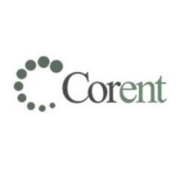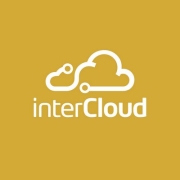PaaS Clouds provide a strategic way to develop, run, and manage applications without dealing with infrastructure complexities. Offering scalability, developers focus on coding while platforms handle backend processes.
Offering a highly flexible environment, PaaS Clouds allow developers to use pre-configured systems, minimizing setup time and speeding up the development process. They focus on delivering robust solutions suited for modern tech landscapes. Incorporating features like integrated development tools, these platforms have become essential for smooth application lifecycle management. They cater to specific needs, helping in reducing overhead and focusing on innovation.
What are the critical features of PaaS Clouds?In industries like finance and healthcare, PaaS Clouds streamline application deployment, ensuring compliance and heightened security. These industries benefit from the ability to quickly adapt to regulatory changes through flexible cloud solutions.
Helping to offload infrastructure management, PaaS Clouds let organizations concentrate on their core business objectives, making them a practical choice for companies aiming for innovation without the burden of handling backend resources.














































According to the IT Central Station (soon to be Peerspot) community, security is the most important criteria when selecting a Platform as a Service vendor (PaaS Cloud). PaaS clouds vary in the level of abstraction they provide their consumers. There are tradeoffs between efficiency and control over the application. Other key considerations are: the degree to which it will integrate seamlessly with the rest of the enterprise platform, the speed and resilience of internetworking, and the extent to which the platform is under control for configuration purposes. Read more »
The term aPaaS (application platform as a service) is often used interchangeably with PaaS. The subtle difference between the two is that PaaS, which provides a greater number of tools and services, refers to the entire spectrum of middleware as a service. aPaaS, on the other hand, encompasses only the tools that are used for application design, development, testing, deployment, management, and updating.
PaaS Clouds provide a scalable and versatile environment for developing, testing, and deploying applications. By offering pre-configured environments and integrated tools, PaaS solutions significantly reduce the time spent on setup and maintenance. This allows you to focus on writing code and innovate swiftly, improving productivity and time-to-market. The built-in services such as database management, development frameworks, and analytics further streamline workflows and enhance the overall efficiency of the development process.
What are the key security features in PaaS Clouds?PaaS Clouds incorporate several security features to protect data and applications. You benefit from built-in encryption mechanisms, role-based access control, and regular security updates provided by the service provider. Additionally, many PaaS solutions offer monitoring tools and compliance certifications, ensuring that your applications adhere to industry standards. This security-first approach allows you to build apps with confidence, knowing that your data and operations are safeguarded.
How do PaaS Clouds support DevOps practices?PaaS Clouds are designed to facilitate DevOps by providing integrated tools and automated processes. Continuous integration and continuous delivery (CI/CD) pipelines are readily available, promoting seamless collaboration between development and operations teams. With PaaS, you can automate testing, deployment, and scaling of applications, ensuring faster and more reliable software releases. This integration enhances agility and enables teams to adapt quickly to changing customer needs and market conditions.
What cost benefits do PaaS Clouds offer?PaaS Clouds offer significant cost advantages by eliminating the need for upfront investment in hardware and infrastructure. You can scale resources up or down based on demand, ensuring that you only pay for what you use. This flexibility helps reduce wastage and aligns your spending with actual business needs. Additionally, with managed services included, you save on maintenance and operational costs, allowing you to allocate resources more strategically towards innovation and growth.
How do PaaS Clouds differ from IaaS and SaaS solutions?PaaS Clouds offer a middle ground between Infrastructure as a Service (IaaS) and Software as a Service (SaaS). Unlike IaaS, where you manage applications and data on virtualized resources, PaaS provides an environment for developing and deploying software without handling the underlying infrastructure. While SaaS delivers fully managed applications for end-users, PaaS allows you to create custom apps with less complexity and greater control. This distinctive positioning makes PaaS ideal for developers seeking flexibility and rapid development capabilities.